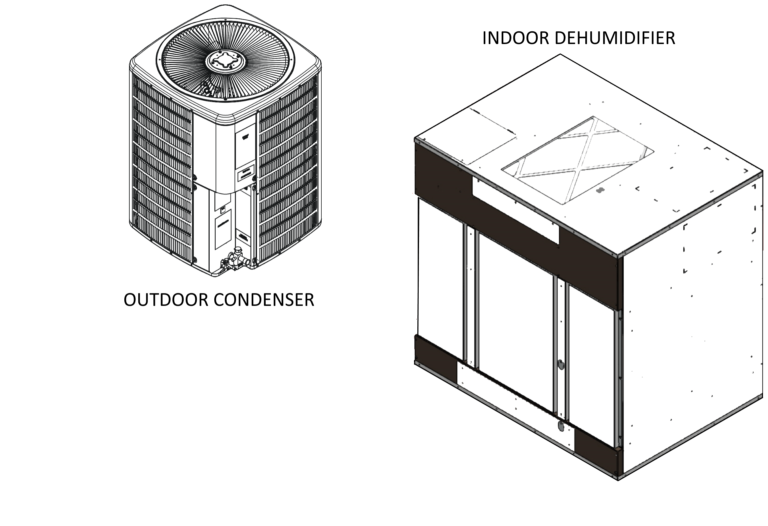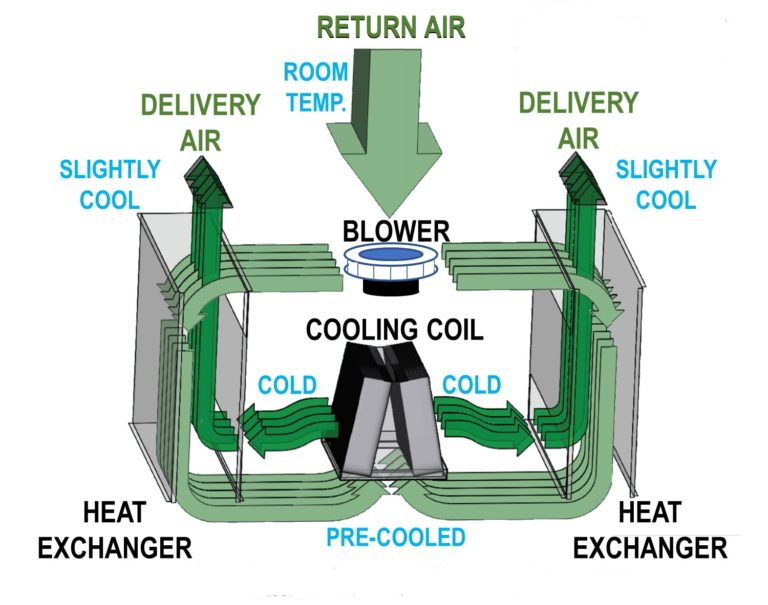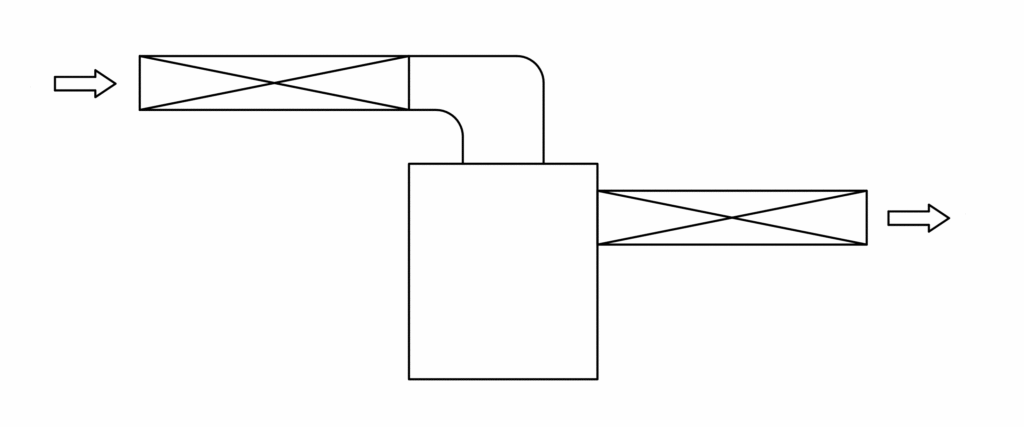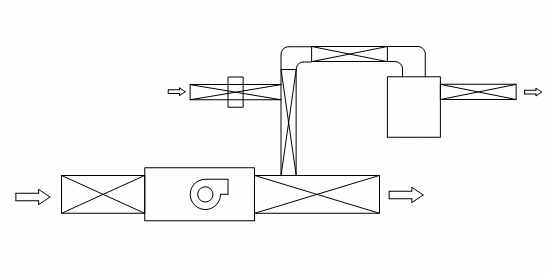There are four aspects to the RH-Cube 18’s design that contribute to these energy savings:
The RH-Cube 18 is a high capacity, high efficiency, split-air dehumidifier, suitable for commercial, industrial, and residential applications. Designed to work along side, but interdependently of, an air conditioner, the RH-Cube18 is capable of tackling 100% of the dehumidification demand without any assistance from the air conditioner, and without adding any heat load to the air conditioner.

The RH-Cube 18 makes use of a pair of facing counter-flow heat exchangers to focus up to 85% of cooling on dehumidification (latent cooling). Because the RH-Cube 18 is a split-air design, with a condenser located outside the living space, the remaining 15% provides cooling (sensible cooling).
A typical dehumidifier may spend as little as 5% of its cooling capacity on dehumidification with the remaining 95% wasted because of reheat by its on-board condenser.

This video animates the mechanism behind how the RH-Cube 18 heat exchangers generate this tremendous boost in efficiency.
Two ducting configurations are recommended for the RH-Cube 18:
Stand-alone is the simpler of the two, but serial configuration offers even more energy savings.
Stand-Alone
The simplest Stand-Alone Configuration uses a pair of ducts to connect the RH-Cube 18 to the living space. An example where this might be appropriate is when dehumidifying a hotel hallway. The RH-Cube 18 could be in a utility closet with a pair of ducts connecting the RH-Cube18’s supply and delivery air to the hallway. Since humidity distributes very evenly and very quickly, this would be sufficient to dehumidify the entire hallway and all adjoining rooms.

Serial
Serial Configuration is a configuration which is patented¹ and unique to the RH-Cube 18. In the Serial Configuration the RH-Cube is located immediately after the air conditioner so that the RH-Cube 18’s return air is taken directly from the delivery air of the air conditioning system.
Even though a stand-alone RH-Cube 18 has outstanding performance, Serial Configuration improves the efficiency (lbs/kw) of the RH-Cube 18 by up to an additional 40% and increases its dehumidification capacity by up to 10%. This is because pre-cooling of the RH-Cube 18’s air supply by the air conditioner allows the RH-Cube 18 to reach a lower dewpoint.
Serial Configuration provides an opportunity to decouple air conditioning from dehumidification. Decoupling involves tuning the air conditioner to provide only cooling, but no dehumidification, and is only possible if the RH-Cube 18’s capacity is sufficient to meet your total dehumidification requirements.

1 – PATENT PENDING US 62974082
In a decoupled system the air conditioner only provides cooling and the dehumidifier only provides dehumidification. When you have a decoupled system, selecting the desired environment becomes as simple as setting your thermostat and dehumidistat to any desired setting. Changing the humidity setting won’t affect the temperature and changing the temperature setting won’t affect the humidity.
With a properly sized RH-Cube 18, decoupling is possible. The RH-Cube 18 has the capacity and efficiency to completely replace the dehumidification capacity of a much larger air conditioner. The air conditioner does not need to be on for the RH-Cube 18 to dehumidify. The RH-Cube 18 does not add heat load to the environment while it is running.
Beyond simplifying environmental control, other benefits of decoupling are:
A significant increase in energy savings both for the RH-Cube 18 and the air conditioner
Saving energy avoiding over-cooling
A healthier environment by reduction of mold, dust mites, and other toxins
Reduction or elimination of mold, rust, and other contaminants from the ventilation system
Increased longevity of the air conditioning system